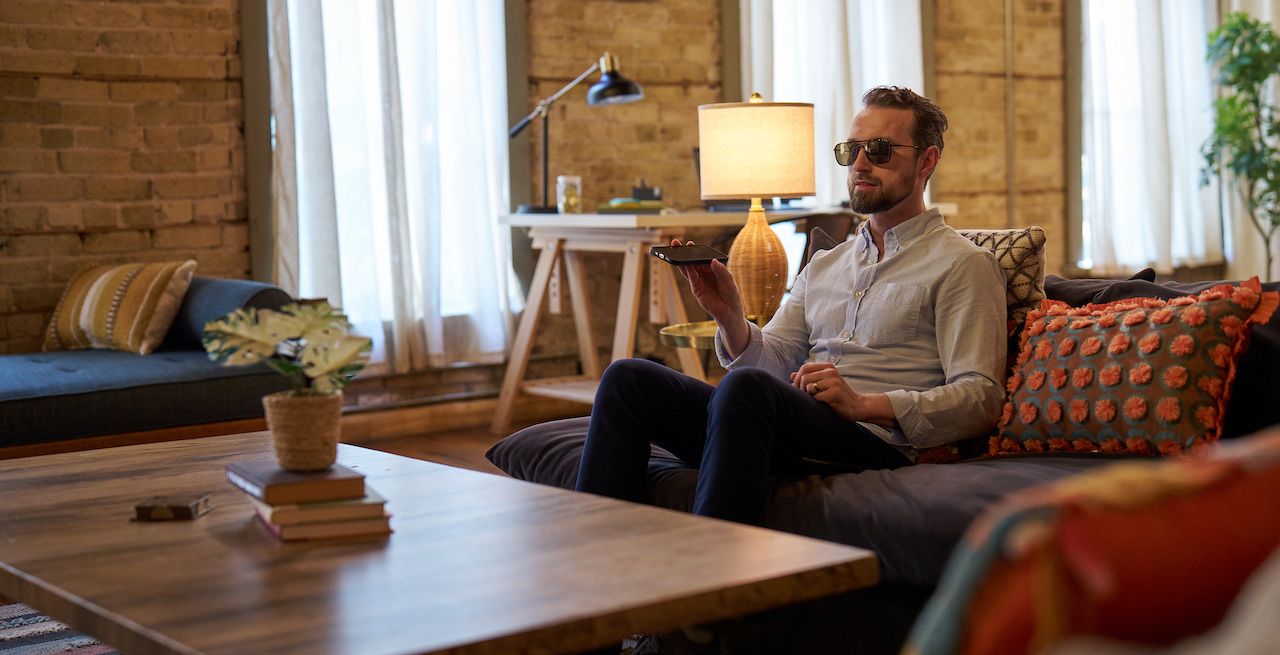News and ViewsNovember 18, 2025
Spectrum Accessibility Team Drives Product Innovation
A Q&A With Vice President of Accessibility Steve Raymond
Share Article:
Key Takeaways:
- Spectrum develops inclusive products and services, engaging directly with those who use them.
- The Accessibility Center of Excellence designs accessible products, guided by team members – over half of whom are people with disabilities.
- Spectrum plans to expand its in-store American Sign Language pilot program in 2026.
Spectrum’s VP of Accessibility, Steve Raymond’s personal experience with accessibility has become his life’s work, inspiring the Company’s multi-pronged approach pairing technology with in-store services, community partnerships and support channels – to make access a reality for all.
Q: What sparked your passion for accessibility – and how does connectivity fit in?
A close friend’s skiing accident left him paralyzed, and watching his journey as a wheelchair user – and later as an adaptive athlete on the U.S. Disabled Ski Team – changed my perspective. I saw firsthand how few places were ADA-compliant and how hard it could be to get around – whether that meant getting through a doorway or onto public transportation. When everyday interactions aren’t accessible, people get cut off from information, services and community.
When my media career moved from local TV to ESPN, I launched a disability-focused employee resource group, introducing adaptive sports to the X Games and helped create the ESPY Awards’ Best Athlete with a Disability category. And nearly three decades ago, I founded Adaptive Spirit, a nonprofit that supports athletes with disabilities and the U.S. Para Ski & Snowboard Team. That same passion drives my work today to make products and technology accessible and available to everyone.

Q: How would you describe Spectrum’s approach to accessibility, and how does feedback from the disabled community inform your work?
We blend technology and real-world outreach, and we do this through Spectrum’s Accessibility Center of Excellence, or ACE – the hub that coordinates the Company’s accessibility efforts. We have two tracks, the first incorporates accessibility features and standards into our products from day one, so experiences work seamlessly with assistive technologies and feel intuitive for all users. On the second, we listen and engage directly with customers, employees and advocacy groups, and then turn that feedback into action – for example, by improving features – whether that’s refining a screen reader path in an app, enhancing tactile cues on a remote or evolving our in-store services. Together, these tracks create inclusive user experiences across our products, our stores and our support channels.
Our work has been recognized in the Forbes Accessibility 100 and the Helen Keller Achievement Award from the American Foundation for the Blind in 2023.
Q: How did Spectrum’s in-store ASL pilot program come about?
We began in 2024 in Rochester, New York, home to Rochester Institute of Technology’s National Technical Institute for the Deaf (NTID) and a large Deaf community. We launched a remote interpretation program that lets members of the Deaf and hard of hearing community use their own smartphone or tablet to scan a QR code and connect virtually with an American Sign Language (ASL) interpreter, who then facilitates the conversation between the customer and the sales rep. The service is simple and removes communication barriers, speeds up transactions and – most importantly – lets Deaf customers communicate in their preferred language. The program is now in nearly 50 Spectrum Stores across Austin, Texas; Los Angeles; and New York, and we plan to expand further in 2026.
Q: What accessible Spectrum products can customers use today to personalize their experience?
The Spectrum Access App and the Spectrum Big Button remote are two of our accessible products that are most impactful. The App uses patented technology to support individuals with decreased vision or hearing by providing audio description and closed-captioning tracks (including scrollable captions). It’s a game changer in helping that audience enjoy entertainment in a whole new way. And it’s a free tool available to anyone in the U.S., regardless of their service provider.
The Spectrum Big Button remote makes navigating our traditional video product easier. Customers who use Xumo to stream also have access to a Large Button remote. Both devices emphasize clear labels, tactile feedback and high-contrast controls.
Q: How is Spectrum improving the customer experience beyond products?
We have a 24/7 Spectrum Disability Support Center phone and chat service, based in El Paso, Texas, and staffed by English- and Spanish-speaking agents, who specialize in supporting customers with vision, hearing and cognitive disabilities. It’s about meeting people where they are, with the tools and support they need to stay connected.
Q: What’s next for accessibility at Spectrum?
Continued momentum on both the tracks. We’ll keep building accessibility into our products from the start, furthering our in-store ASL pilot program and deepening partnerships with the disability community.
When we design devices and experiences with people in mind, those things get better for everyone. By combining inclusive design with in-store services; strategic partnerships; and representation in our community, like our Spectrum Reach employee Keisha Barber and her daughter Haylee, who is blind, we make accessibility part of the everyday experience.
Article Text
Article Media
(1 file | 72.54 KB)
Related Media
(3 files | 1.7 MB)
All media downloaded from this site may be used for editorial purposes only.



